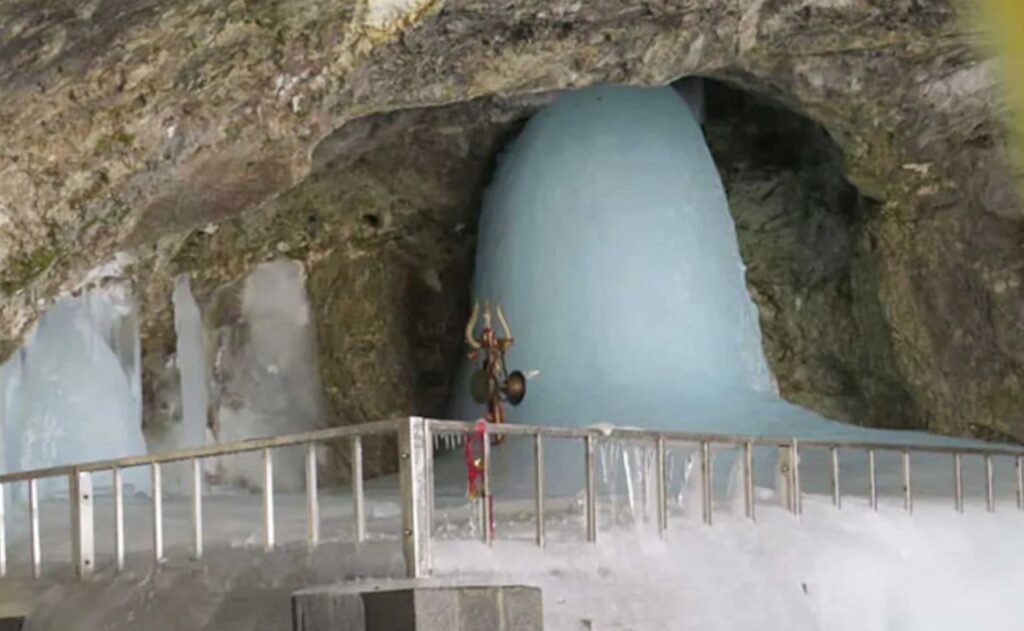The 62-day long Shri Amarnath Ji Yatra is set to commence on 1st July 2023. Pilgrims will have the option of embarking on the journey via two routes: the traditional 48-km Nunwan route in Pahalgam, located in south Kashmir’s Anantnag district, and the 14-km Baltal route in Central Kashmir’s Ganderbal district. Both routes offer breathtaking views of the scenic Himalayan region, making the pilgrimage a spiritually enriching experience for the devotees.
The Amarnath Yatra is an annual pilgrimage that holds immense significance for millions of devotees from around the world. Nestled in the picturesque Himalayas, the Amarnath Cave is believed to be the abode of Lord Shiva. This revered pilgrimage takes devotees on a spiritual journey of self-discovery and devotion. Let’s delve into the various aspects of the Amarnath Yatra and explore its significance and highlights.
The Legend of Amarnath:
- The legend traces back to ancient Hindu scriptures, where Lord Shiva revealed the secret of immortality to his divine consort, Parvati.
- The cave, located at an altitude of 3,888 meters, is said to be the place where Lord Shiva narrated the Amar Katha (immortal tale) to Parvati.
- The ice stalagmite formed inside the cave is believed to be the symbolic representation of Lord Shiva’s presence.
Planning and Preparations:
- Registration: Devotees are required to register for the Yatra through the official website or designated registration centers.
- Medical Fitness: A thorough medical examination is mandatory to ensure the physical fitness of the participants due to the challenging terrain.
- Travel and Accommodation: Pilgrims need to plan their travel arrangements and book accommodations in advance, as the Yatra attracts a large number of devotees.
Commencement of the Yatra:
- Traditional Rituals: The Yatra begins with religious ceremonies in Pahalgam or Baltal, the base camps of the pilgrimage.
- Holy Procession: The journey commences with a grand procession carrying the holy mace (Chhari Mubarak) from Srinagar to the Amarnath Cave.
- Traditional Chanting: Devotees engage in melodious bhajans and chants, creating an atmosphere of devotion and spirituality.
The Sacred Trek:
- Challenging Terrain: The trek to the Amarnath Cave is known for its rugged and demanding terrain, requiring physical endurance and stamina.
- Pahalgam Route: The traditional Pahalgam route spans around 46 kilometers and offers breathtaking views of snow-capped mountains and gushing rivers.
- Baltal Route: The shorter and steeper Baltal route, spanning approximately 14 kilometers, is favored by those seeking a more challenging trek.
Spiritual Experiences:
- Cave Exploration: Upon reaching the Amarnath Cave, devotees experience a profound sense of spirituality and devotion as they witness the naturally formed ice lingam.
- Darshan and Pooja: Pilgrims perform rituals and offer prayers to seek blessings from Lord Shiva, enhancing their spiritual connection.
- Vedic Traditions: Vedic chants and religious ceremonies conducted by priests add to the divine ambiance of the cave.
Safety and Facilities:
- Security Measures: Stringent security arrangements are in place to ensure the safety of the pilgrims throughout the Yatra.
- Medical Facilities: Well-equipped medical camps and emergency services are set up at regular intervals along the Yatra route.
- Accommodation and Refreshments: Various government and private organizations provide tents, langars (community kitchens), and rest houses to cater to the needs of the pilgrims.
Conclusion:
The Amarnath Yatra is an awe-inspiring journey that allows devotees to connect with their spirituality and seek the blessings of Lord Shiva. It is a pilgrimage that tests one’s physical endurance and offers moments of self-reflection and devotion. The journey through the Himalayas and the divine experience in the Amarnath Cave leave an indelible mark on the hearts and souls of the pilgrims, fostering a deep connection with the divine.
Question : Amarnath Temple is located in which district of Jammu and Kashmir?
a) Anantnag
b) Srinagar
c) Ganderbal
d) Baramulla
Answer: a) Anantnag
